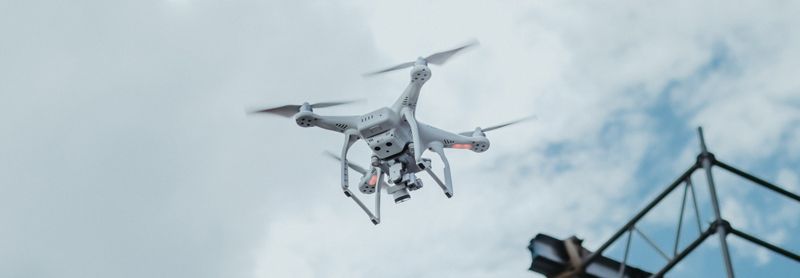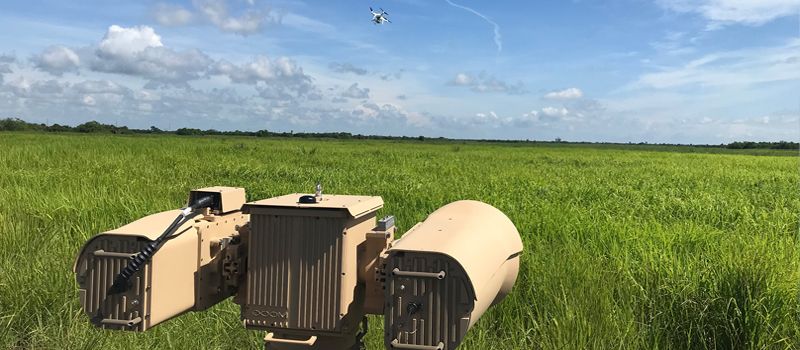
We have seen great strides in technology, and we are beginning to see the production of different types of unmanned aerial vehicles (UAVs) or UAS (systems) as the case may be. Due to the ease of use and accessibility of Drones or UAVs, there has been an increased usage on the commercial front for delivering goods and drugs, monitoring public areas, surveying, SAR (Search and Rescue), agric, cartography, and even first aid. Despite these numerous positive applications of drones, there are also tendencies for its usage for illicit and illegal acts like smuggling and illegal transportation of goods into restricted areas, across borders, and in some cases, into prisons. There are also illicit uses like illegal surveillance and flying aircraft interference. There have been many instances of drones being used for illicit acts and also causing accidents. Below are a few examples and scenarios where drones had had a negative effect:
- A drone crashed into the lawn of the white house in 2015, which was flown by a government office that was intoxicated.
- A plane with a light engine crashed into a Drone in the province of Quebec, Canada, while landing in 2017.
- Three people in the state of Georgia were convicted in April 2020 over an alleged attempt to transport phones and tobacco to prisoners in Hays State Prison Trion.
There is a clear indication from these examples that there is a need to monitor drone flight. Although some companies that produce drones prohibit their drones from flying into and around some certain areas called sensitive zones like prisons, power plants, airports, and other top facilities, this might not be enough and can create constraints because not all drones have these built-in capabilities.
To critically address these problems, there is an uprising in the development of anti-drone systems built for drone detection and localization of their trajectory. Various technologies have sprung up in a bid to help security teams to track drones.

What is drone detection, and what are the different types available?
Some technologies can be used to monitor or detect UAS or drones within any airspace. The technology differs in size, function, and detection range. We have drones that operate using RF communications; we can track these using RF sensors. Some other drones are GPS pre-programmed and can be detected using Radar detection. Also, there are visual detection technologies that can also be used in getting visuals on drones and can be used to confirm threats.
Generally, drone detection and localization technologies can be classified under the following four types or four modalities:
- Radar-based drone detection.
- Acoustic-based drone detection.
- Radiofrequency (RF) based drone detection.
- Camera-based drone detection.
Radar-based drone detection
There are high-resolution radars that are specifically designed to detect drones and track them. These radars engage in a continuous scanning of the sky to look out for reflections and abnormalities to detect movement and size. Reflected signals are compared with a database of drones that helps in the characterization and detection of threats. The database is also used to eliminate options on the radar that are not drones like birds.
Acoustic based drone detection
This involves the use of relatively low-cost acoustic detection systems that are made up of arrays of acoustic sensors or microphones. These sensors and microphones are used in classifying certain acoustic patterns of drone rotors even within low visible environments. Although this can be effective for both high and low visible environments, it has some few drawbacks like:
- The maximum operational range is below 200-250 m.
- High sensitivity to environmental noise, especially in urban and noisy areas.
- Wind conditions affect these systems.
These drawbacks can influence the performance of detection using acoustic-based detectors.
RF-based drone detection
This is one of the most popular drone detection systems – and the reason for that is not farfetched – most drones make use of the radio frequency (RF) spectrum in their communication with operators. RF drone detectors detect drones based on their RF signatures. Most drones keep the receiver and transmitter connected using a specific RFID chip. This allows other devices not to overtake the drone on that same frequency.
RF detection makes use of RF sensors that listen passively and monitors frequencies between 70 MHz to 6 GHz for transmission between the drone and its pilot or receiver. This helps detect the location of the drone and can also help in detecting the location of the pilot.
Camera-based drone detection
Not all drones have RF transmission – and these types of drones can easily be detected using low-cost, visual detecting technologies or camera sensors based on CVA (computer Vision Algorithm). When it comes to visibility of target for detection and classification, camera sensors are best for giving formal visual verification. This helps to know clearly if the object is a drone or not. Also, it provides clear, visual verification for relevant information like the drone model, drone dimension, and payload – information that cannot be provided by other drone detection systems. Even though a camera-based drone detection system provides good localization, affordability, medium detection range, and easy human interpretation, there are some drawbacks. One of the major drawbacks is its poor performance at nighttime and within limited visibility areas or conditions like clouds, dust, etc. These drawbacks can be addressed using thermal cameras alongside our detection system.
How do I know the best Drone detection system to use?
Choosing a suitable drone detection system for your facility can be dependent on different factors. Some of the factors include your budget, requirements, security needs, and facility design or layout. RF sensors can track most drone threats because more than 70% of drones in the market make use of RF communicators. Moreover, RF drone detectors cover a wide range of areas depending on the system specifications. Also, they are cost-effective.
Our experts here at SAAB RDS recommend that you begin with the RF-based drone detection system to give you an idea of the drones that fly around your facility, help detect threats, and get comprehensive security data on the drones around you. SAAB RDS also helps you in getting these solutions installed within your facility while giving you actionable intelligence on what is going on in your airspace. You can consult any of SAAB RDS experts to get more information.
What you stand to benefit from Drone detection
With drone detection, you are able to:
- Identify drone activities and pilot activities as well.
- Alert security team early enough by providing the drone make, altitude, model, and GPS location of the drone and its pilot.
- Provide advanced alerts and warnings, thereby increasing your reaction time.
- Provide real-time monitoring of any drone or UVS activities within your area, allowing for quick intervention.
- Collect data as evidence.
Who provides drone detection services?
SAAB RDS is the leading provider of drone detection technologies. You have access to everything that is needed to detect drones in the airspace. Our team of experts carries out a thorough analysis of your location and facility and suggests the best drone detection solution for your facility.
Schedule a call with one of our experts today and get help setting up a drone detection system in your facility.
Do you want to talk to an expert?
Click here for a free consultation.
